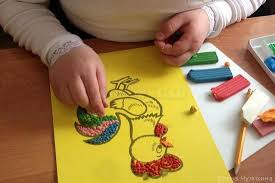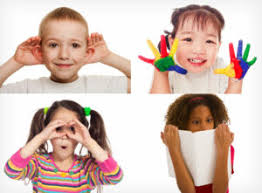Learning Styles Series: The Kinesthetic Learner

Characteristics of a Kinesthetic Learner
By defining a leading channel for the perception of a student’s information, the learning process can be greatly facilitated. In the case of a pre-school or primary or secondary school student, the conclusion about the prevalence of a certain channel of perception of information is drawn from observations. The teenager or adult is asked to take special tests.
How do you recognize a kinesthetic child?
Peculiarities of the behavior that will “give” the kinesthetic:
- The child’s dictionary is dominated by words describing feelings or movements (cold, touch, hard, grab). In conversation, much attention is paid to inner feelings.
- This baby just loves pets. He constantly touches them: strokes, carries them on his hands.
- He likes body and emotional comfort. It’s almost impossible to put him in a barbed sweater.
- During the dialogue he does not look into the eyes of the interlocutor, but downwards. In this case, makes many movements and gestures, trying to get closer to him. Even can begin to twist a button on the clothes of another person.
- During the conversation, he constantly changes his posture. Favorite position – hands embrace themselves, legs are shaken or intertwined. He often slouches, walks around with his shoulders down.
- Shows a tendency to remain silent. Sometimes these children seem timid and shy. This opinion is wrong, just guys get lost in the background.
- They often rely on their intuition, which is very well developed.
- It’s hard for these kids to concentrate. They get distracted by anything.
- The child clearly remembers the overall impression.
- Memory is turned on as they move. The pupil, listening to the teacher, may not even look at him, but move his fingers with a pen or pencil.
- If it is necessary to rewrite homework from the board, the child will long dig through the briefcase. Most likely, will take out textbooks and directly in them will mark the necessary numbers.
- His notebooks are sloppy: they’re covered in stains, wrinkled. There’s a complete mess on the desk, where the student orients himself perfectly.
- He uses change to stretch and move.
- The pupil has an exceptional command of his body: he has excellent coordination of movements, he is flexible and clever. He has a pronounced craving for sports.
- A penchant for manual labor.
It’s hard for teachers with kids like that. They call them “hyperactive,” “unlearned.” A kinesthetic that is forced to sit still will, after a while, start knocking on fingers, moving legs or something like that. If a child is treated incorrectly, 90% of the teacher’s effort is wasted. Go to the site and find out morehttps://argoprep.com/blog/learning-styles-series-the-kinesthetic-learner/
If a kinestick holds something in its hand, it’s easier for it to understand the teacher.
The problem of the wrong approach to a child, when the way he or she absorbs information is not taken into account, is quite profound. Specialists say that such children cannot be expected to solve a problem quickly or to repeat what they have heard immediately.
For example, kinesthetics students spend a long time counting on their fingers when their classmates have already begun to solve examples orally. For children, this becomes a big problem. What only they do not come up with to hide their “failure”: hiding their palms under the desk, behind the back, knocking on the counter with their fingers. Guys need a completely different attitude to themselves, patience from teachers and close people.
According to some professionals, all children are kinesthetists. This view has a right to exist, because all children of preschool and primary school age are very mobile and emotional. Later on, most children change the dominant channel to the visual or.

How do you deal with kinesthetics?
For children who learn the world in a tactile way, it is difficult to perceive the lecture and verbal explanations of the teacher. Teachers have to repeat the same thing many times and show illustrations. The shouting does not work on such schoolchildren.
Recommendations for working with children-kinesthetics
- It’s very difficult for a child to sit still for a long time. We need to give him some exercise. He can go get some chalk, write something on the board.
- Two people will understand each other by speaking the same language. It’s the same with the kinestics. Gestures, touches, typical slow thinking operations will help them.
- Such students are taught through memory. Exaggerations contribute to memorization.
- The child will react to the teacher’s remark if it is accompanied by a gentle touch on the shoulder.
- It is better to accept the material that was recorded.
- Practical activity (constructing, experimenting) – the most productive activity in the lesson.
- Physical activity is important for the student. The more energy he spends, the more successful he will prove himself in other areas of life.
A kinesthetic pupil acts, checks and analyzes. He learns by memorizing algorithms. It is important for him to understand what this or that rule is for. What’s the use of the theorem? How does it help in life? Working with children-kinestics, it is necessary to give them answers to these questions, to show the field of application of the studied material in practice.
How do parents act?
A lot depends on the way parents behave. A child’s misunderstanding will lead to conflict.
The child will cope with homework in a comfortable environment. If he is forced to read or teach the poem “properly,” after a while, these activities will only cause hatred. Monotonous math teeth will not work.
At home kinestics can not through the power to make him sit still and learn lessons. He needs a discharge: let him go put the kettle, serve something from another room, look out on the balcony. It’s easier for him to remember the material: in portions, while driving.
It’s difficult to study exact sciences with kinestics, but there is a way out. Let the child cut out of the paper as much as possible: numbers, signs, unknown, even formulas. If a student holds something in his hands, it is generally easier for him to understand the subject.
Any images can be linked through associations. A paper application will remind you of the material you’ve learned. The question “What did we learn when we cut out the machine?” triggers an associative thinking mechanism.
A kinestick won’t learn a poem if it just sits there and reads it. When he takes something in his hands, starts sculpting or drawing, the result is completely different.
A child with a kinesthetic leading channel is useful:
- Have a set of materials for different handicrafts, experiments, practical exercises at home.
- Read large encyclopedias where he will find many answers to his questions.
- Watch informative films and programs.
- Go to exhibitions, museums, go on excursions.
Kinestics have a hard time coping with stress and discomfort situations. They are completely immersed in their experiences. It is important for parents to talk more about their child’s feelings, to find out the source of anxiety.